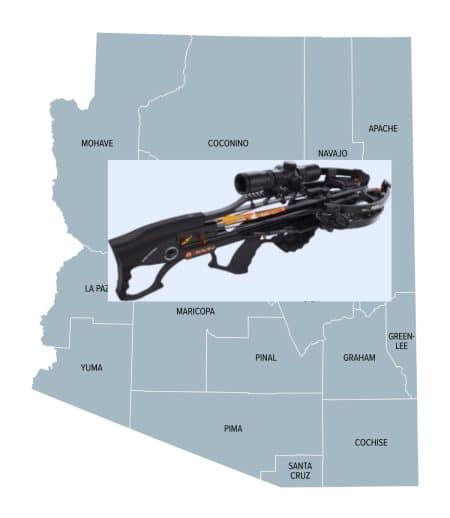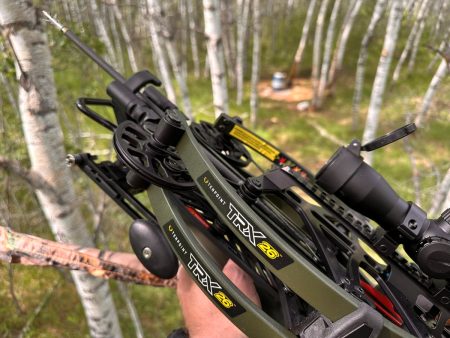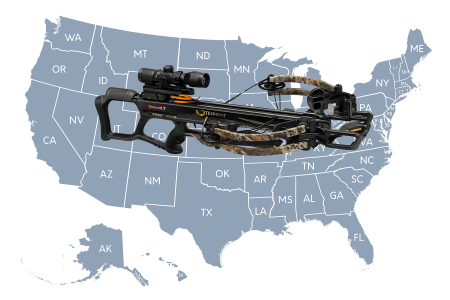The goal of every hunter, regardless of the tool used, is to successfully harvest an animal. We dream about it all year. Most of us are diligent and determined to learn new strategies and techniques that will help us achieve that goal. We spend countless hours scouring catalogs, searching for new equipment or garments that will aid us in our pursuit. Some of us will travel great distances to investigate an object reviewed in catalogs because we want to touch it and hold it before making an expenditure. We purchase maps and or location apps for our smartphones, so we can study possible hunting areas. We make large expenditures for equipment, not only to harvest an animal but also to process the meat we hope to ingest.
Our objective is to outsmart an animal in the creature’s home territory. Maybe if we are lucky, we can display a prized animal in our cabins or homes. Not because we are heartless Neanderthals, as some liberal outlets would falsely declare, but because we value an artistic means of displaying a creature so beautifully crafted by God that it deserves to be admired for years longer than it would have survived. It would be admired not only by us but by many people for years to come. I get it. I do! I am proudly among the self-described hunters listed. Failure to tag an animal during a hunt, though necessarily tolerated at times, is rarely described as a cherished experience.
At times we can get so caught up with concerns of tagging an animal that we take the hunt itself for granted. This is especially true of young, healthy hunters and seemingly healthy seniors as well. I remember times when I returned home in a bad mood because an animal outsmarted or otherwise eluded me. I would beat myself up all day if I released an arrow that missed.
Everyone accepts that their days afield will one day come to an end. But they assume that that conclusion is way off in the distant future; and therefore, our end satisfaction remains the priority. As for the experience? Well, as time marches on, the occurrence can get filed in our minds under the categories of unimpressive or assumed. That should never be the case!
I love hunting of all kinds and especially enjoy seeking whitetail deer. I started accompanying my father into the deer woods in 1965, at the age of 10, a full two years before I would be permitted to carry a break-action, single-barreled shotgun loaded with a pumpkin ball into Pennsylvania’s woods. I soaked up every bit of knowledge my mentor would share and used his knowledge and that of several other key figures to further my skills. It is hard to imagine those early occurrences happened more than 50-years ago.
I developed the skills to kill whitetails in various habitats and environmental conditions with a variety of tools including bows and arrows, inline muzzleloading rifles, flint-ignited black powder rifles, shotguns, and centerfire rifles. In December of 2020, I faced the reality that like my father and the other influencers of my hunting past, one day my soul will walk through forests, fields, and woodlots without my human presence. All the animals I ever outwitted will not mean a thing.
The opening day of Pennsylvania’s traditional firearms opener was scheduled to take place the Saturday following Thanksgiving. I spent most of Friday preparing for the grand event. As the day progressed, my wife and I developed slight fevers, body aches, and chills. Though every media was flooding the airwaves with doom and gloom reports of the Coronavirus, the symptoms I felt were mild and very similar to the brief bouts of influenza I had dealt with for many years, despite getting flu shots. I was sure it was a mild flu, and I would merely feel a little under the weather for 24 hours and bounce back like usual.
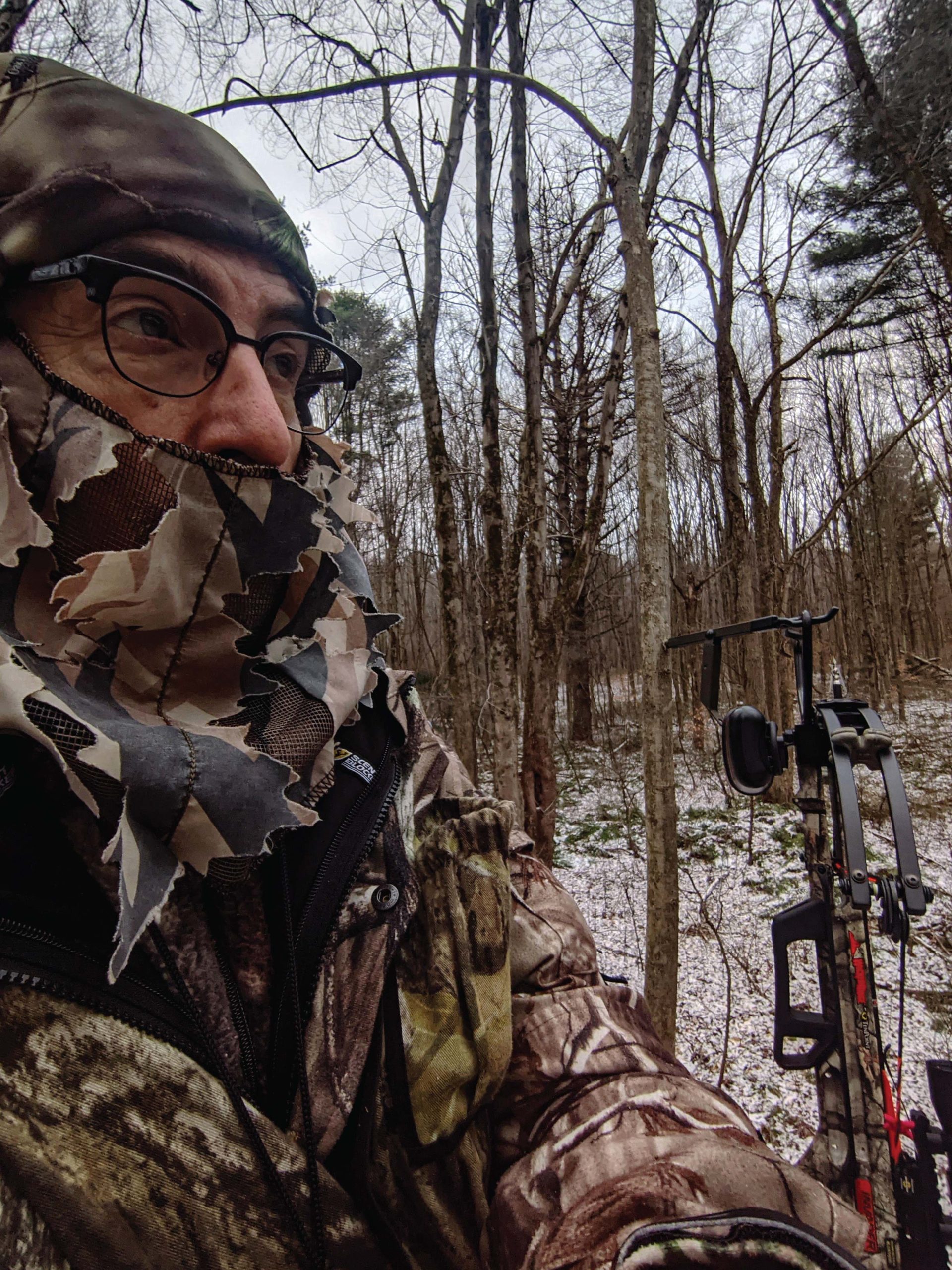
I woke up in the wee hours of Saturday morning, expecting to take my .270-caliber rifle to the woods and harvest a deer. Realizing I wasn’t up to par, I felt it wise to wait and see how I would feel after lunch. As expected, I started feeling better by late morning and considered leaving the house as noon approached. A mild fever and chills returned, so I decided to miss the opening day.
Uncharacteristically, my wife and I chose to miss church services the next day because we each felt a little off. We weren’t sick, and certainly could have attended, but it’s just common courtesy to avoid passing germs or viruses to other people. Our adult daughter, who is a healthcare worker, stopped by the house to see why we missed services and insisted we get tested for Coronavirus. “I don’t think you have it”, she advised; “but wouldn’t you feel relieved to know for sure”? I couldn’t argue with her logic.
Later that day my spouse and I tested, and the results showed we were positive for Covid-19. This was 2020 and there wasn’t a vaccine yet. Lord knows the creepy virus had received more than enough doom and gloom acclamation from news sources. Even so, I remained positive that I would be just fine. Many people reported mild, flu-like symptoms, and then recovery. I expectd to share that experience. After all, I never smoked, I exercise routinely, and other than the high blood pressure I battled with medication for years, I smugly bragged that I felt 20-years younger than my 65-year age.
My real concern was for my wife, who for 30-years has been a brittle, type-1 diabetic. I watched over her like a hawk, looking for any signal that she would need extensive healthcare. I’ll cut to the chase and explain that my wife took a few Tylenol, and over the course of a couple of days was on the mend. In fact, she tested negative within a week. Time would show that I should have been more concerned for my own health.
After a week of fighting the illness, it became clear that I was not faring as well as my spouse. Though a couple of X-rays showed that Covid pneumonia was absent from my lungs, my oxygen levels dropped. A strange, metallic taste accompanied every food I tried to eat. I started experiencing uncontrollable shivers and the intensity of my body aches worsened. Then I experienced a rarely reported symptom called Covid brain fog, which I considered the worst symptom experienced to that point.
My energy drained, and because I couldn’t concentrate on anything, my wife became concerned that I may have suffered a stroke. Tests would reveal it was not a stroke, but that darn Covid brain fog. I lacked the desire to even open text messages from my adult children, which I knew would contain photographs and videos of my beloved grandchildren. The fever that had dissipated then returned, and my breathing became labored. Covid pneumonia was now in my lungs, and after dealing with the situation at home, it became clear I needed professional help. After our local hospital failed to recognize some of my under-publicized symptoms, my wife and daughter delivered me to the acclaimed Cleveland Clinic to battle the scary virus. There I would remain for more than 10 days.
During my hospital stay, I witnessed people suffering from the virus much worse than I was, but I was keenly aware that if my oxygen continued to drop, the ICU and ventilators would be next. Those first few days were the worst, and I found myself anticipating doctor’s reports that would confirm I was improving. The brain fog caused depression, but doctors assured me that 98% of people contracting the virus recover, and they were sure I’d fall onto that majority list. “Be patient! You are going to be fine”, they’d advise. Easier to advise than experience, I can tell you!
Eventually, they sent in a doctor who had no connection to my case. Her visit, she explained, was only to assure me that she too had dealt with Covid-19 a few months earlier, and like me, she had experienced Covid brain fog. “You are not the only person to experience it, and your motivation and ability to think clearly will return”, she assured me! Hearing those words from another person who shared the experience was very helpful.
Throughout 2020, every case was reported with dismal concern and portrayals of a death sentence! As a reminder, even our national presidential election had been conducted with severe changes made to the election process, to accommodate voters so they could mail-in ballots in a manner never experienced. As I turned the corner to recovery, I found myself cursing news sources for instilling such fear and thus depressing patients.
Toward the end of my hospital stay, a rapidly developed vaccine was only then leaving warehouses for delivery to frontline workers. While tending to my needs, nurses would often look up at the television in my room, and smile as they watched the reports of the vaccines being loaded into transport trailers. Depression was changing to hope.
On December 15th, 2020, I left the hospital as an official Covid-19 survivor. My wife retrieved me from the famed hospital and as she drove me back into my home state of Pennsylvania, we spotted several deer in fields near the roadways. Though relatively unimportant at the time, I regretted missing the entire rifle deer season. It had come and gone, and for the first time in 55-years, I hadn’t participated. As Christmas approached, my body was still in a weakened condition, but a dim hope remained that I could squeeze in a late season hunt with a flintlock rifle or bow. The Pennsylvania primitive weapon’s hunting season opens on December 26th, (unless that date is a Sunday) and remains available to hunters into late January. It didn’t seem likely, but perhaps I could improve enough to squeeze in a deer hunt. Pennsylvania’s late season is a challenge under the best of circumstances, few of which occur in northwestern Pennsylvania. Weather is one issue to contend with. Most Americans are unaware that the City of Erie, in the northwest corner of the state, is the second snowiest metropolis in America, averaging more than 104 inches per year, and the rural areas south and southeast of the city, (where my hunting usually occurs), sees an additional 25 to 50 inches of white precipitation every year. Let’s just say that I’ve resorted to adding snowshoes to my hunting attire on more than one January occasion. Even when precipitation is light, blustery winds crossing the Great Lake unchallenged until making landfall deters deer movement. Doctors warned me that many months might pass before my energy would return. They weren’t joking. A chest X-ray on January 5th confirmed that dead Covid pneumonia cells were still present in my lungs. I improved a little each day, and my energy level increased as the last week of the primitive season approached.
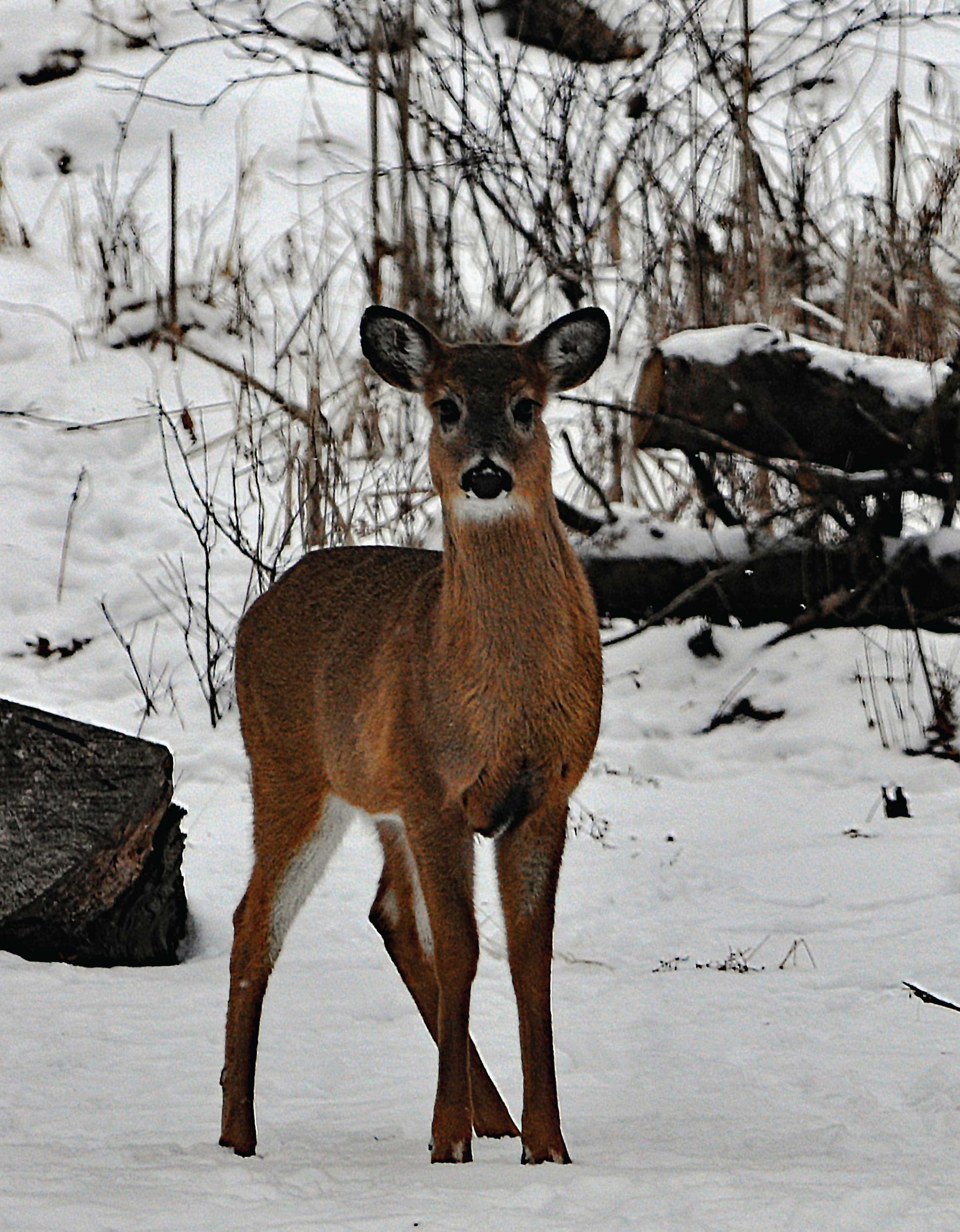
I decided I would enter the forested areas I enjoy so much and would participate in a couple of half-day sessions. Up to now, my January hunts were limited to a flintlock rifle (if conditions deemed the flint would ignite black powder), or my Bear bow when conditions were damp. I was pleased that I added a Wicked Ridge crossbow to my hunting arsenal, and I would put the crossbow to good use. After arriving at my favored public land, I locked the front hubs of my pickup truck so I could select the 4-wheel drive option to climb the snow-covered trail. Considering the amount of snow that could have been on the ground, the 3-inches was like a welcome doormat. It was just the right amount to highlight animal movement and would provide lubrication to aid a weakened hunter in extracting a downed whitetail. None of those thoughts mattered. I cared only that I was able to be out there and able to revisit places I was fond of. Normally, I would have desired to climb into a portable treestand, which I would have packed in and out. In my still weakened state, the stand was out of the question. Another month would pass before a chest X-ray would show my lungs were completely void of covid pneumonia. The disadvantage of hunting at ground level was just another reason I desired to hunt with the crossbow during this outing. I’d rather not have to go through the motion of drawing a bow at ground level when all low limbs and shrubs were free of foliage to cloak my movement.
I knew where a small stand of immature trees would grant me enough cover to feel somewhat hidden from deer. The spot I had in mind would grant me the opportunity to see moving deer before they would spot my camouflaged human form, or so I hoped. The area was uphill, but it would be a relatively short hike up the mountainside. From there, I would have the advantage of hunting with a birds-eye view over a well-traveled flat, without hunting from a treestand. Only 100 yards would remain above me, and experience taught me that most of the animals traveled along a ridge 40-yards below my projected location. I’d seldom seen animals coming from above, except during the traditional rifle season when so many hunters were in the woods that deer scattered every which way. I expected to be alone during this hunt, so I felt comfortable ignoring the upper elevation and concentrating on the trail.
I carried in a seat that hangs on a tree’s trunk, and because I knew the crossbow would eventually get heavy, I packed a hook that would allow me to hang it on a nearby tree or downed branch. I had just set my seat at the correct height to assure I could sit comfortably when a ruffed grouse unexpectedly wandered into view. The game bird was unusually content to be on the forest floor. During winter, it was more common to see or hear grouse flushing from the lower limbs of pine trees, but not this time. It wandered about in a nearly reckless manner, paying very little attention to me or its surroundings. For a moment I wondered if I’d have the rare opportunity to witness a fox or coyote feast upon the grouse. It was on the ground for at least 10-minutes before finally flapping its wings and landing on a nearby limb. As I settled in, I thought about the circumstances that had brought me to the forest so late in the season that I knew the odds were greatly stacked against success. Just a few weeks earlier, any smart money would have bet I’d have to wait until the next autumn to participate in an Allegheny Mountain whitetail deer hunt; yet here I was! I found it easy to accept I might not fill a tag. I prayed a nice deer would wander by, and I wouldn’t care if it had legal antlers or was an antlerless deer, but tagging an animal was not as important to me as it had been during previous hunts. The woods were magical, and a breeze was just strong enough to whip the scent of pine, yet mild enough to let it float into my nostrils. It was a mostly sunny day, which is always welcome in northwest Pennsylvania during the winter months. Several bright, white clouds occasionally interfered with the pure sunshine, but it was a bright day just the same. As I pondered nature’s beauty, the grouse I’d forgotten about fluttered away for no apparent reason. It startled me, which is what unexpected grouse flights are supposed to do.
Then I spotted what may have inspired the grouse to fly. A deer was meandering its way along the trail below. My pulse quickened and I instantly considered shooting angles and distances. It quickly became apparent that I was observing a very young animal. Then I entertained all the thoughts any normal hunter would. Should I tag such a young animal? It’s late, and this is most likely my last chance to put venison in the freezer this year. I normally pass small deer, but my freezer usually has venison mixed among the contents by now. Should I or shouldn’t I? Eventually, I concluded I was already blessed and chose to let the small deer pass safely. Given the circumstances, I thought I might reconsider my decision, but I can report I had no regrets. It brought a smile to my face knowing I had the shot opportunity, and I was comforted knowing that deer would be a good fall harvest. I would love to conclude this story by including a grand photograph of a huge buck and brag that I killed it with my crossbow during that hunt. Alas, I cannot! Perhaps you feel that means the hunt ended rather unspectacularly, but I did not think so. A couple of gray squirrels and the colorful ruffed grouse would have been enough wildlife to fulfill my day; seeing the young deer was the icing on the cake.
I released the strap that held my tree seat firmly to the tree trunk, slung it over my shoulder, and took a few steps before soaking in one final, appreciative eyeful of God’s beautiful blessings before slowly walking back to my waiting truck. I placed my gear in my already warmed vehicle and hopped behind the steering wheel. I hadn’t moved a quarter mile on the logging road before a couple of whitetails were illuminated by the headlights. They leaped across the logging road a mere 25-yards in front of my vehicle, and I stopped to watch them gracefully bound through the forest with their white tails held high, as if waving goodbye.
As I turned off the trail and onto the main highway, I knew I’d never again complain about having an unfilled tag. Just being out there was the real blessing, and I placed that hunt in my memory’s filing cabinet in the drawer reserved for cherished hunting moments!
Would I ever tag a Pennsylvania whitetail with a crossbow? Inspired by the experience of that late-season hunt, I decided to alternate using my crossbow with my compound bow during archery hunts in the fall. As luck would have it, I tagged a nice doe while hunting from the ground with my crossbow, in the same spot where I had sat during that cherished late season hunt a season earlier. I considered the doe a bonus poured on top of the blessing of participation.
Be aware if you haven’t yet realized it: the future you are creeping toward is racing back to you. Assuming tomorrow’s hunt is a mistake. Cherish every time afield!
Per our affiliate disclosure, we may earn revenue from the products available on this page. To learn more about how we test gear, click here.



